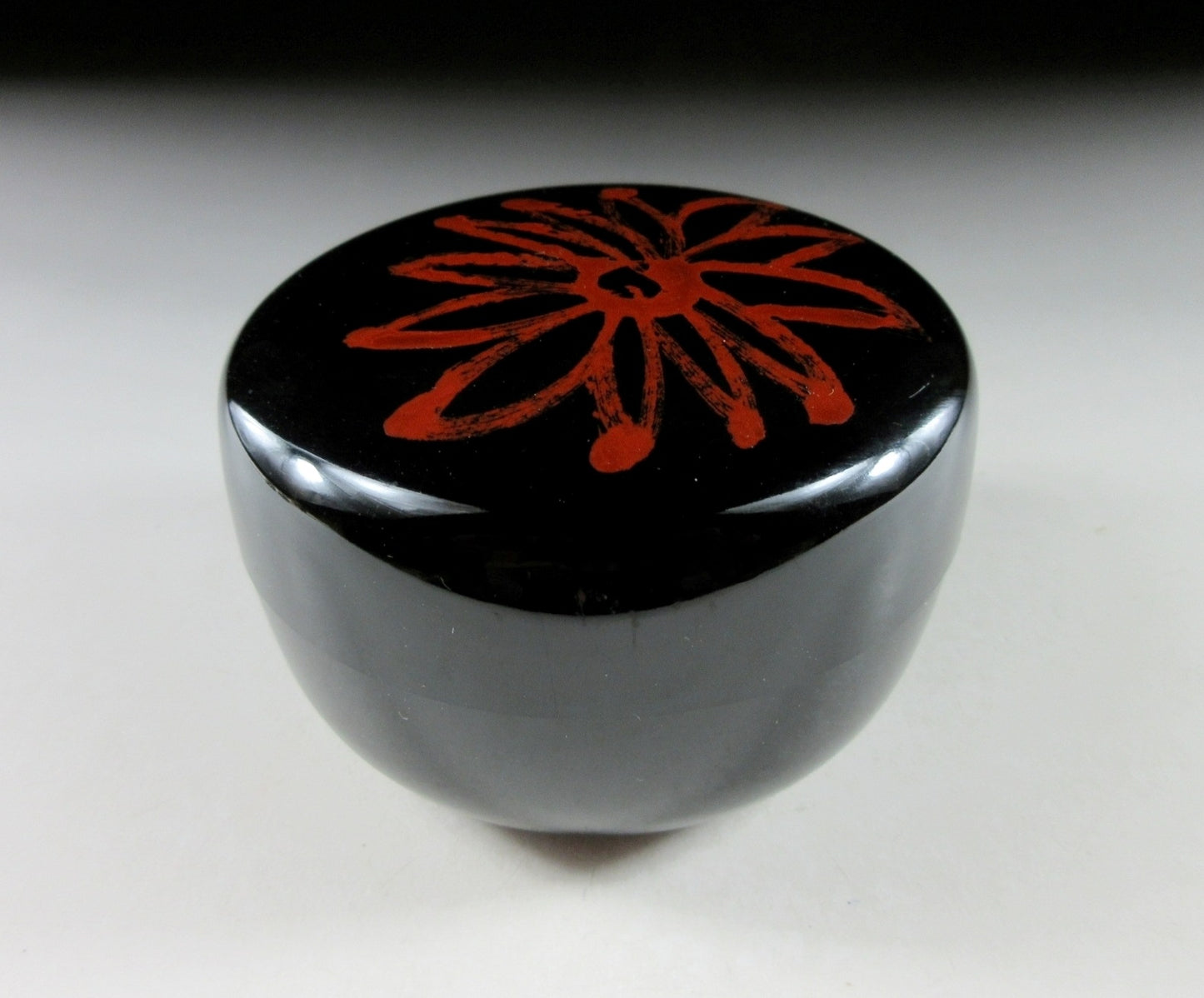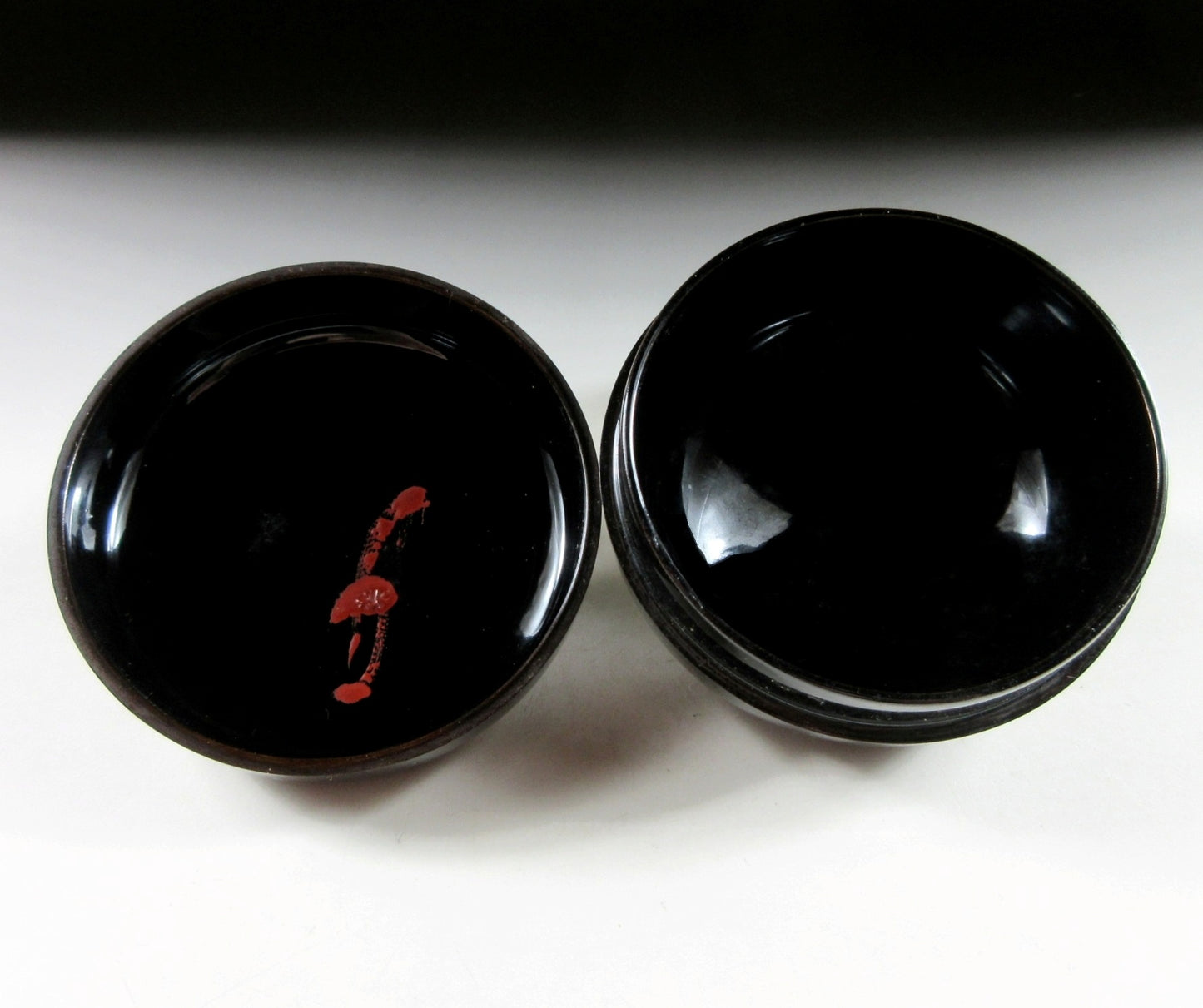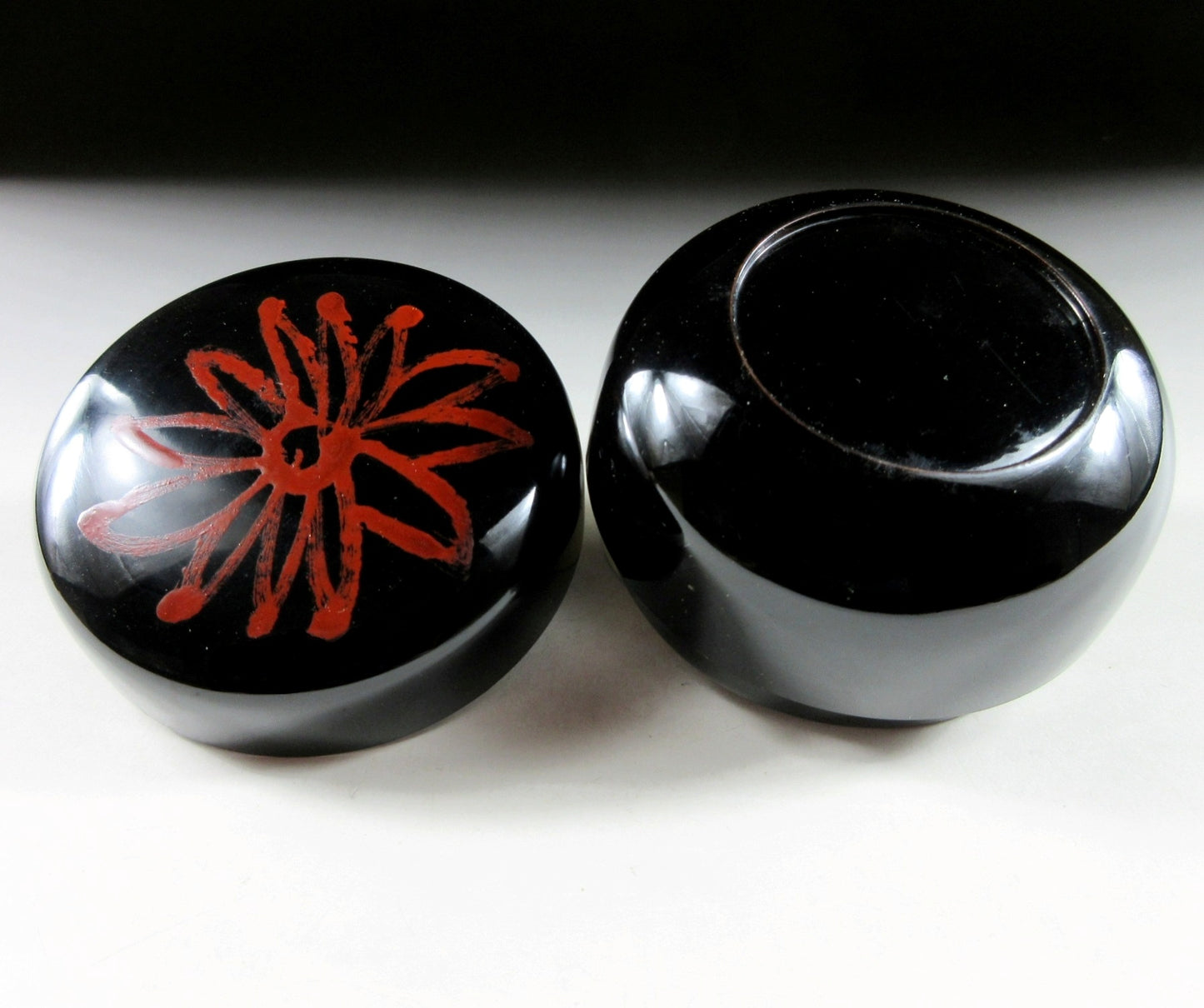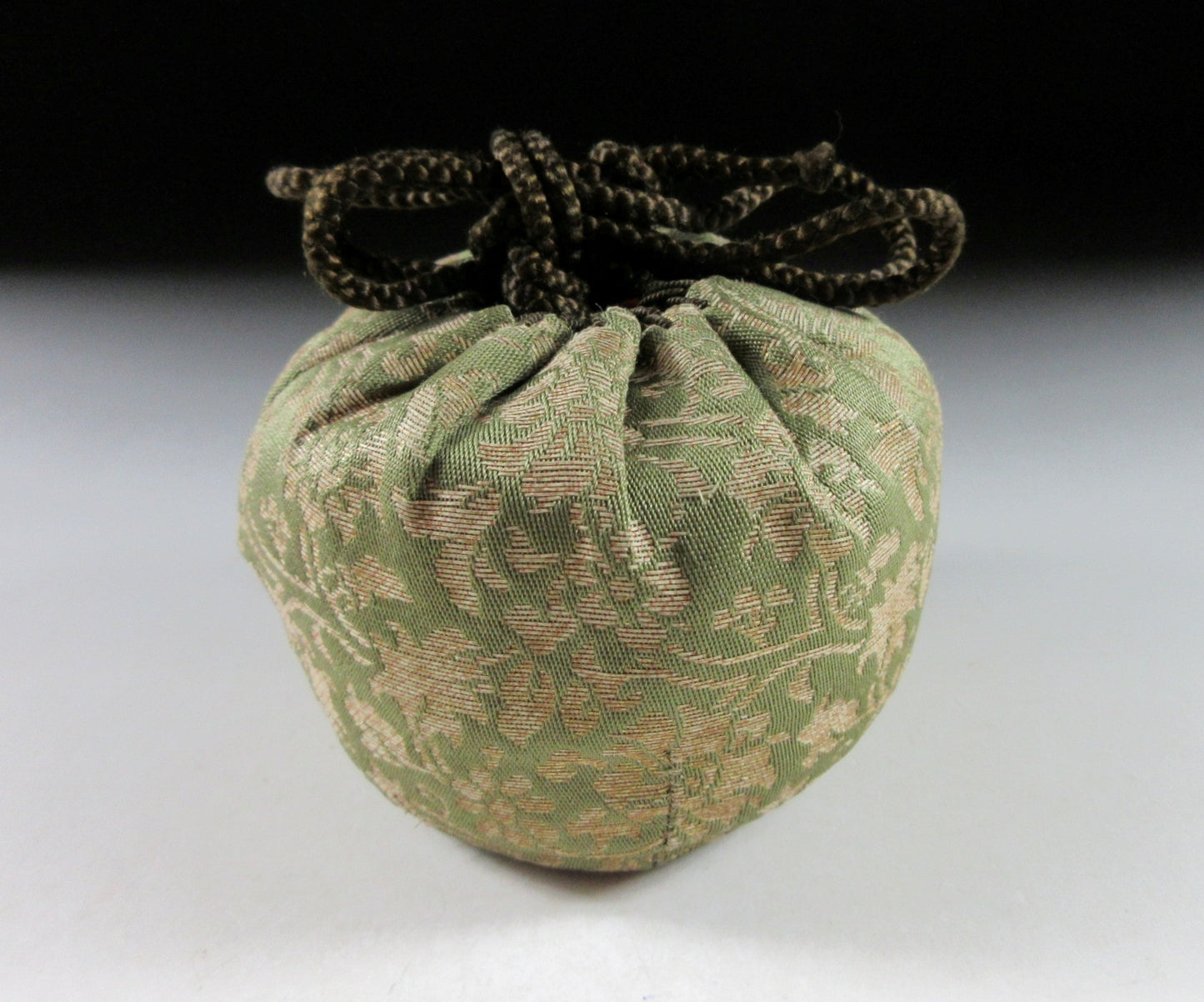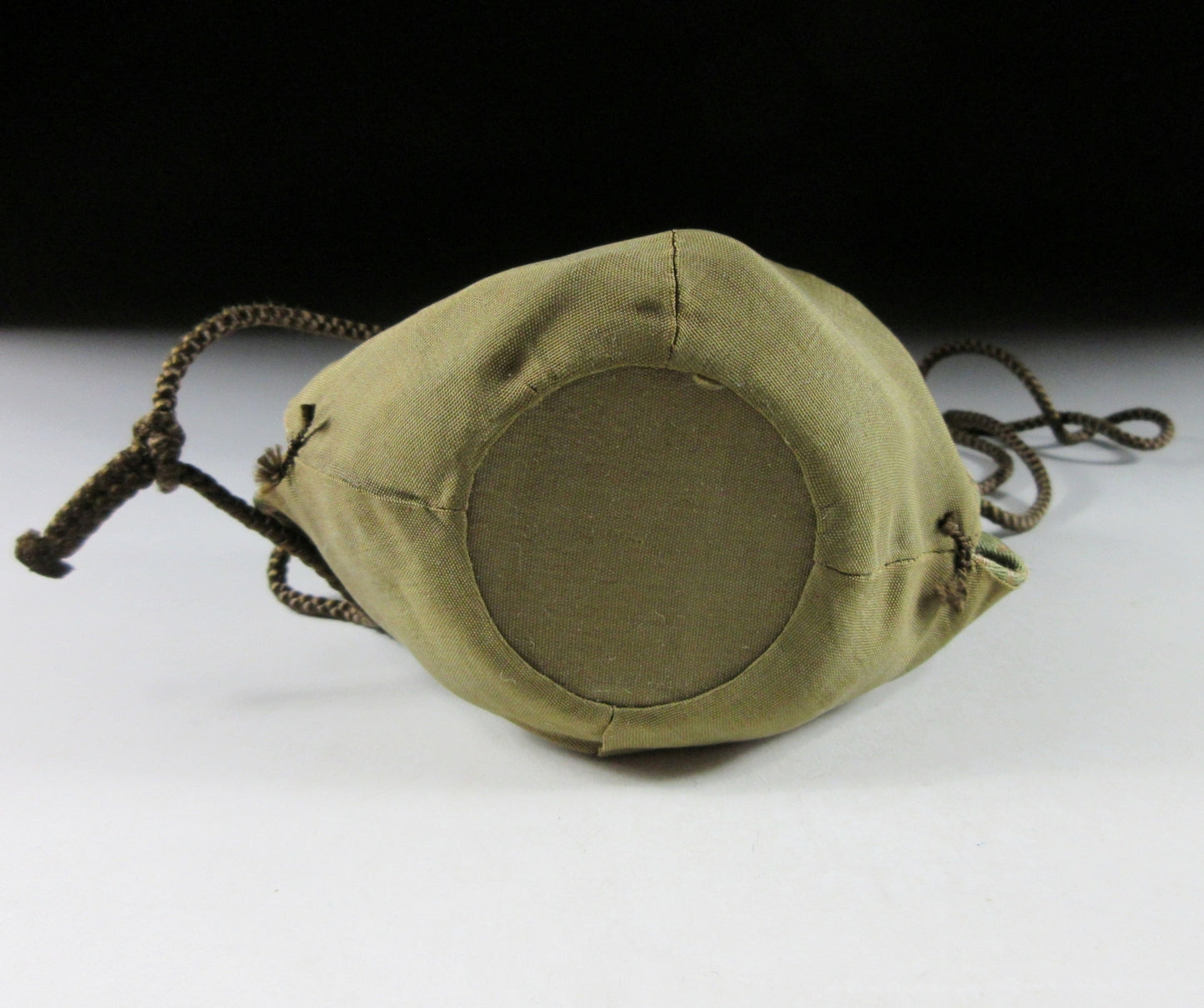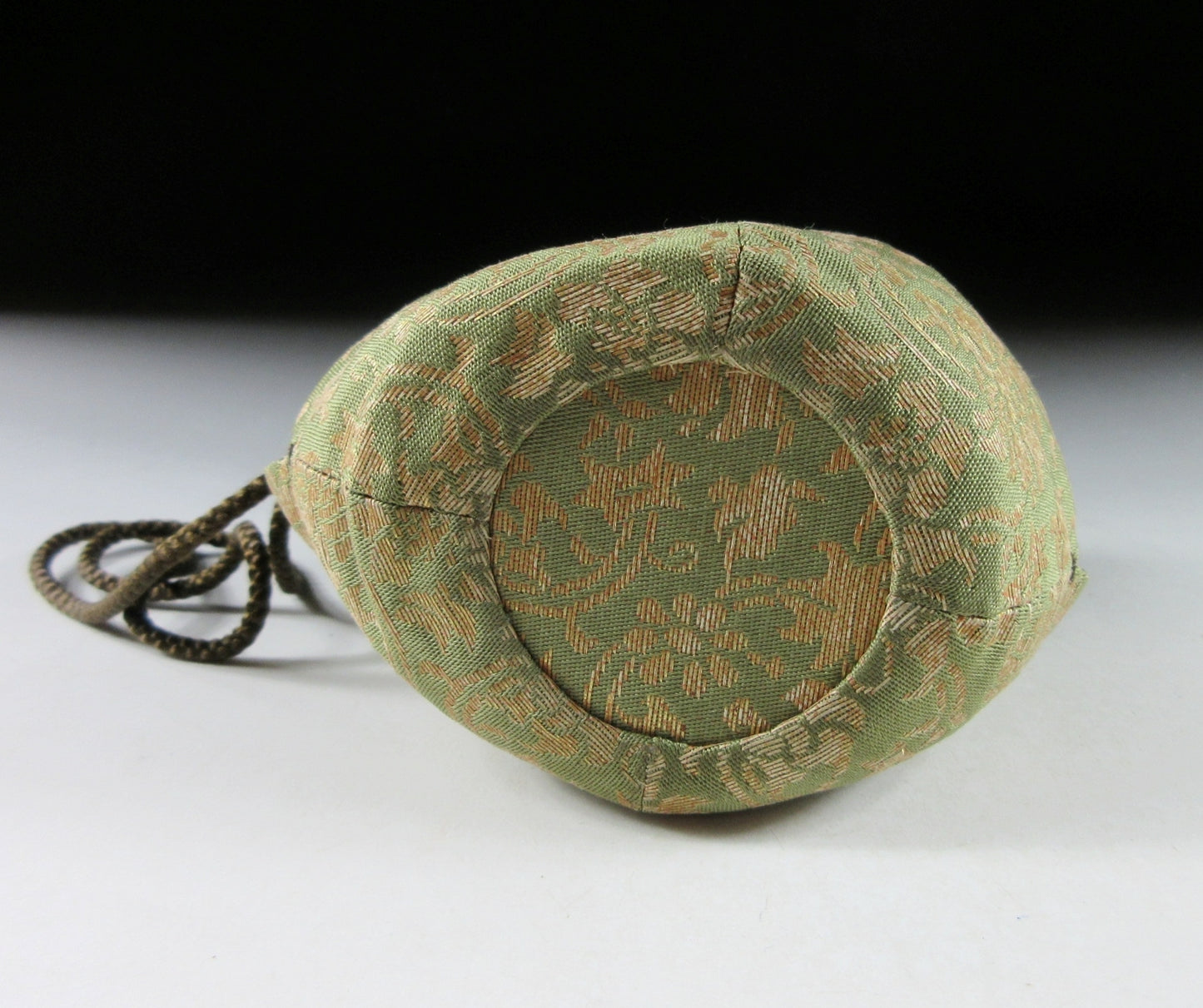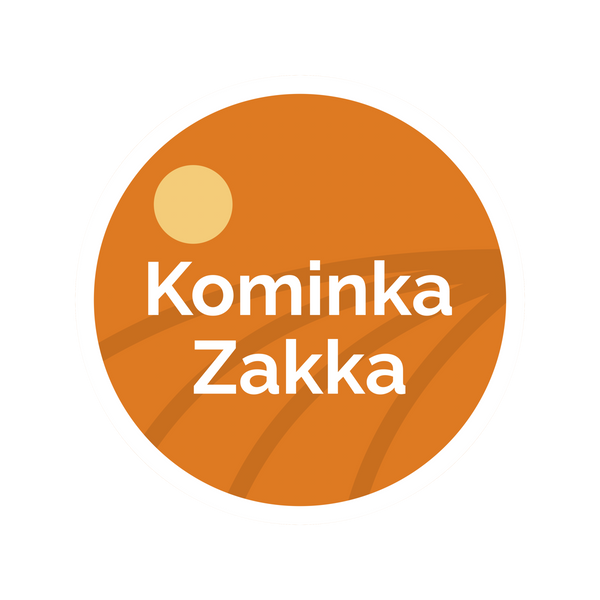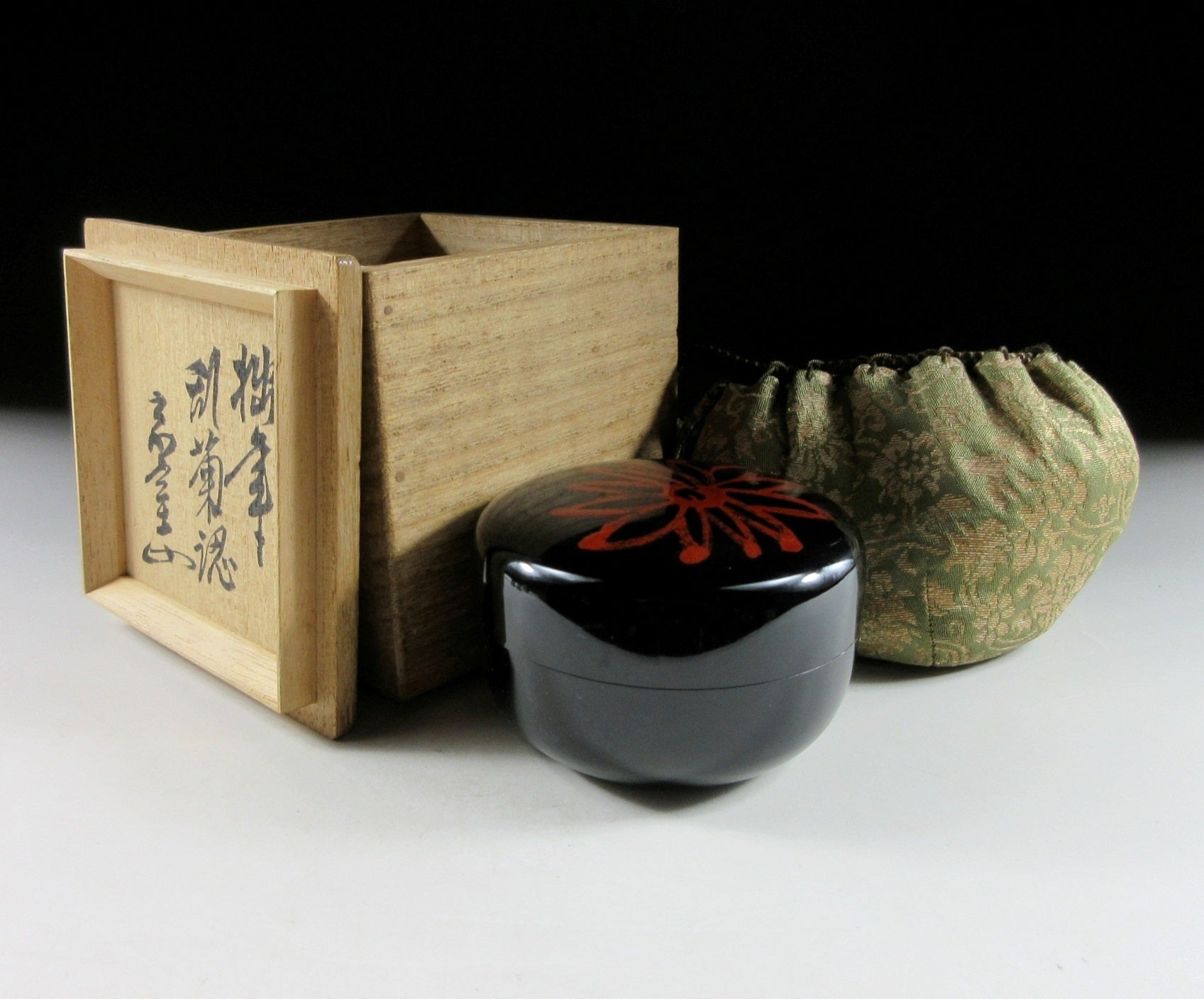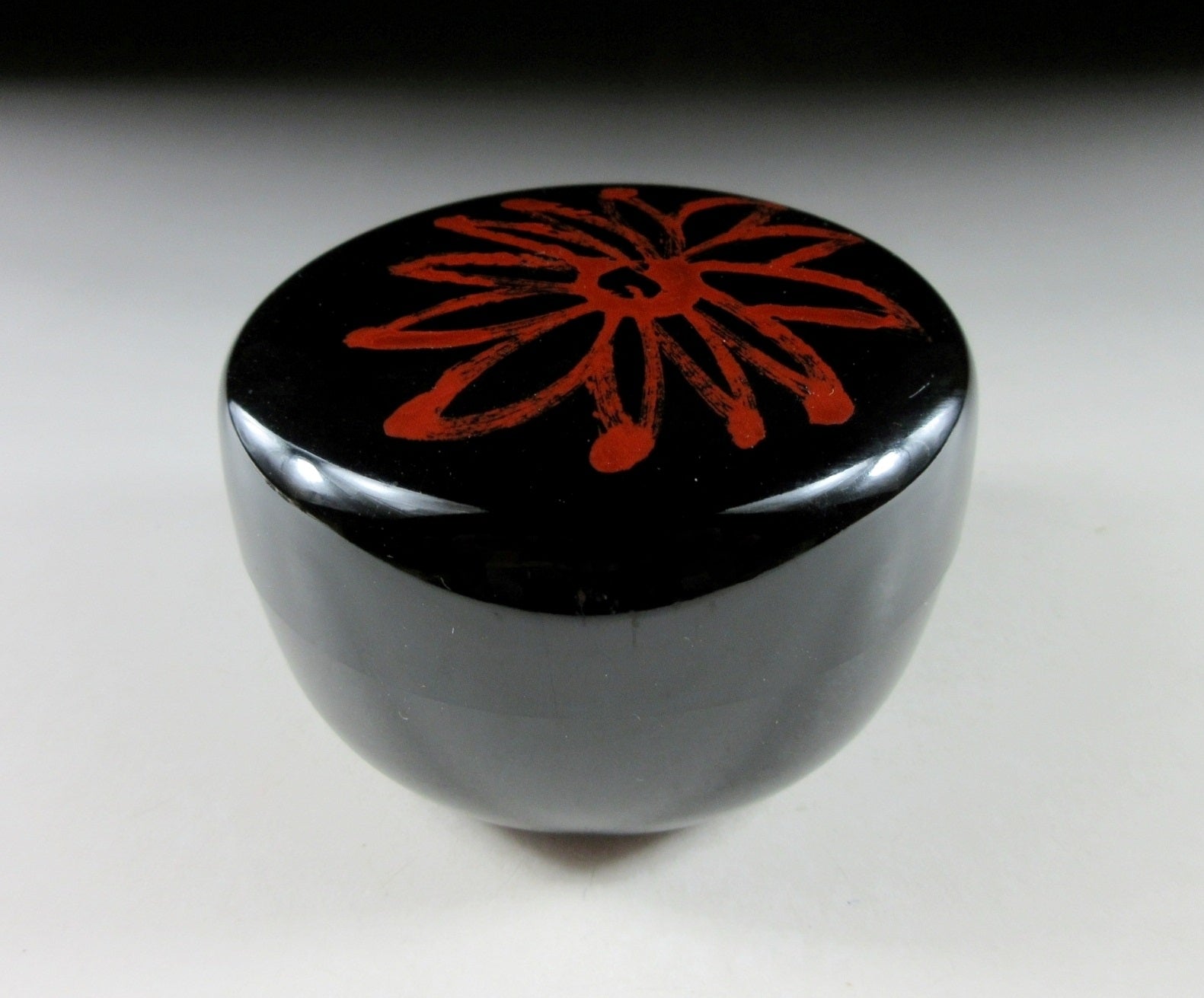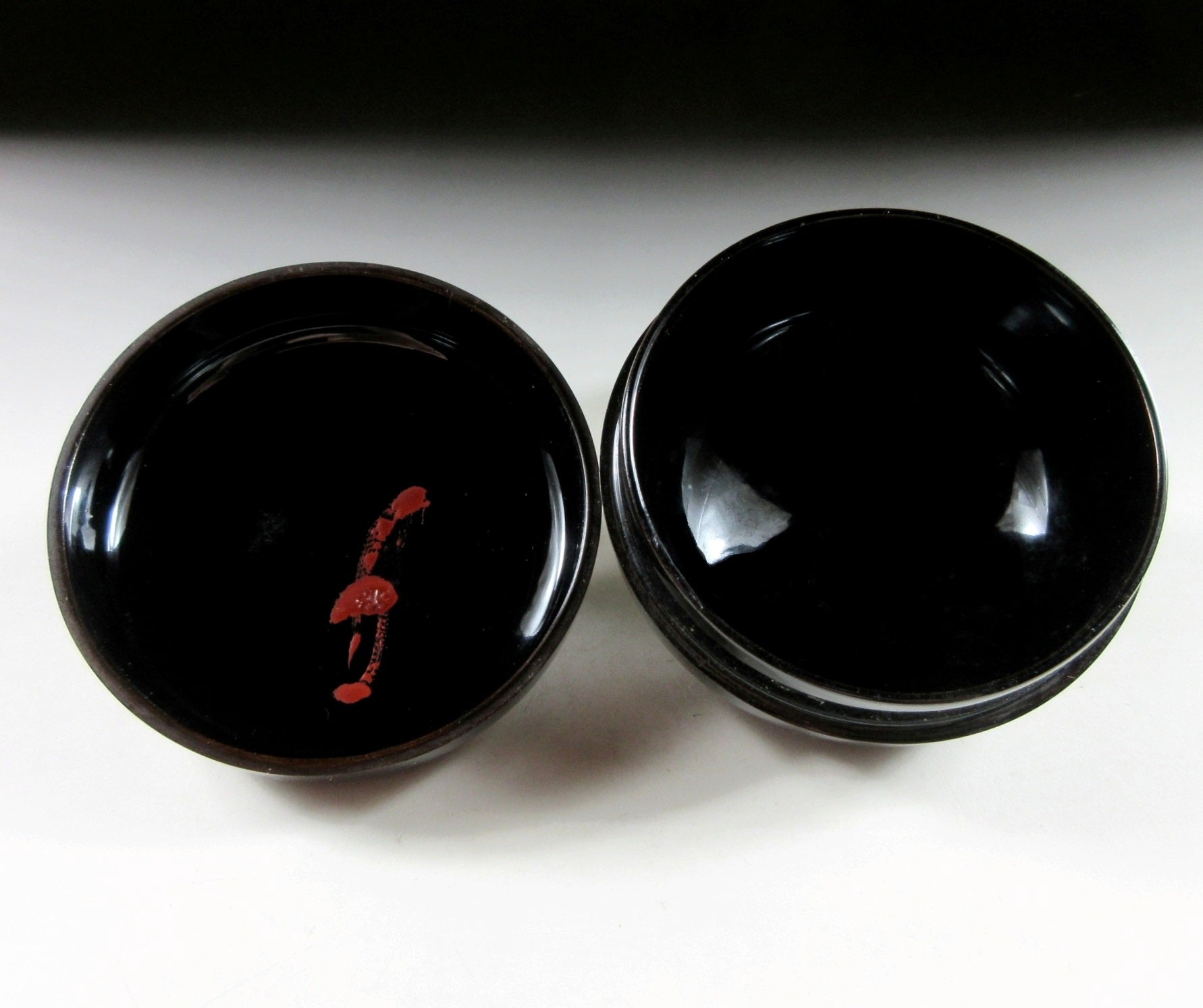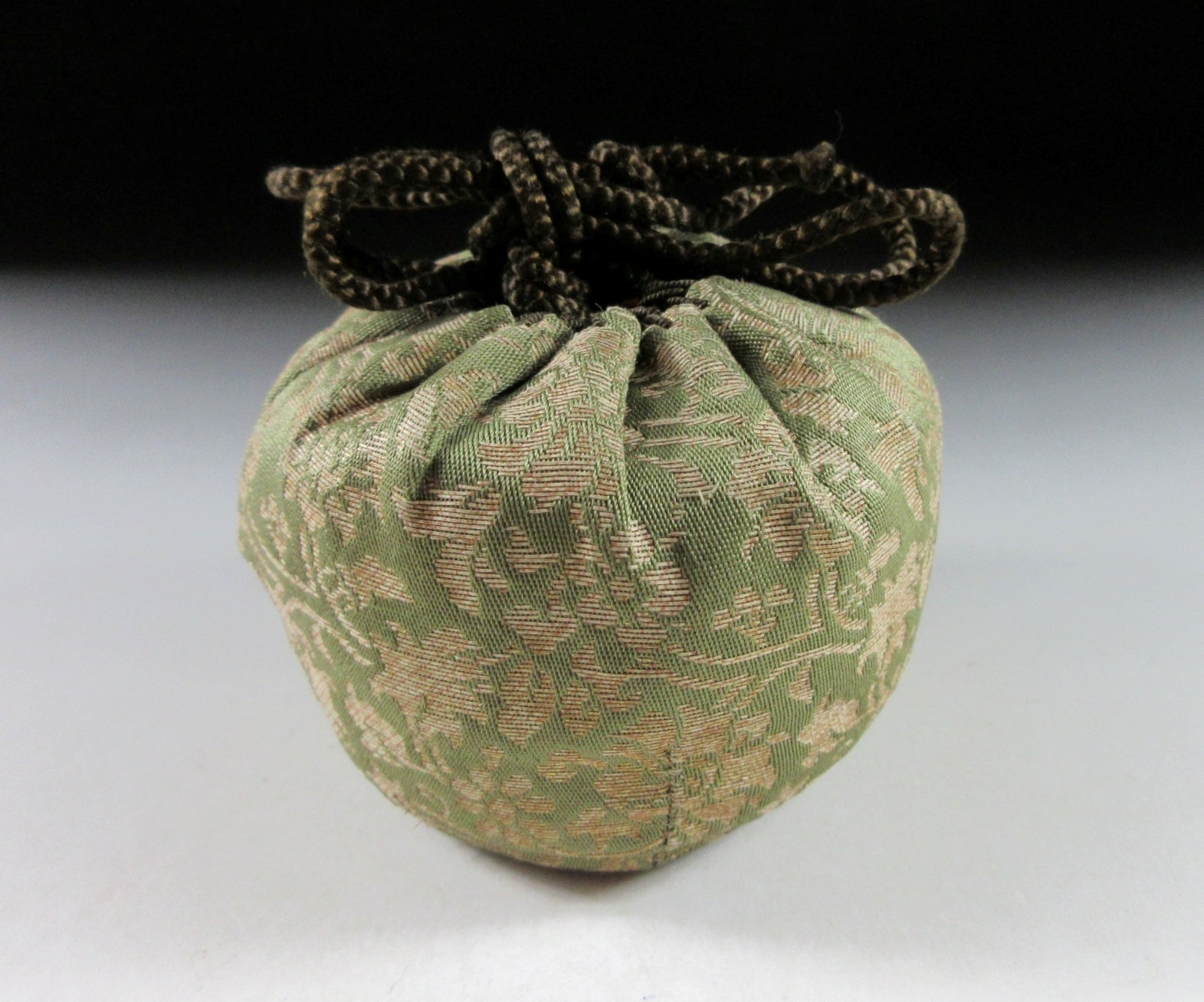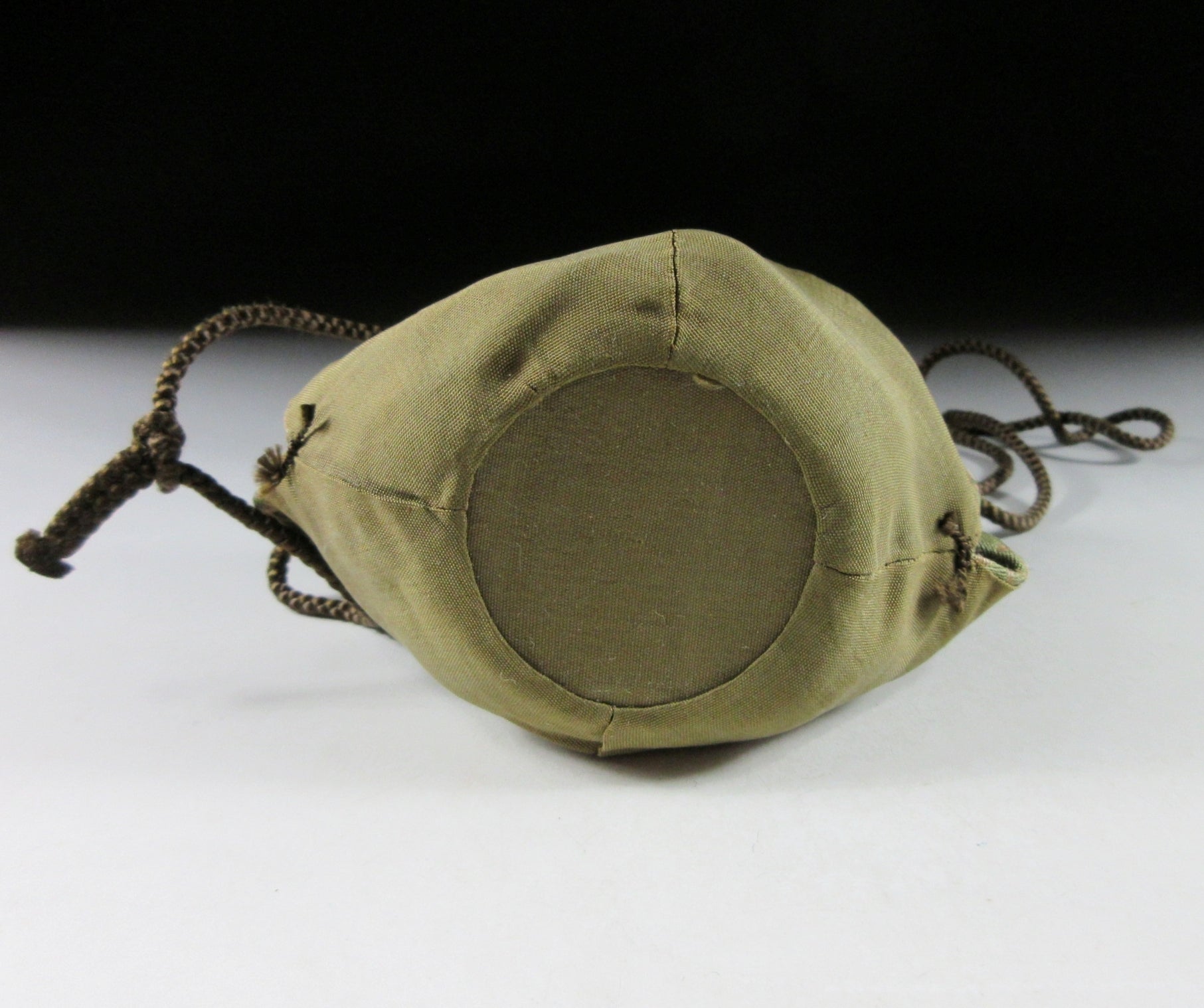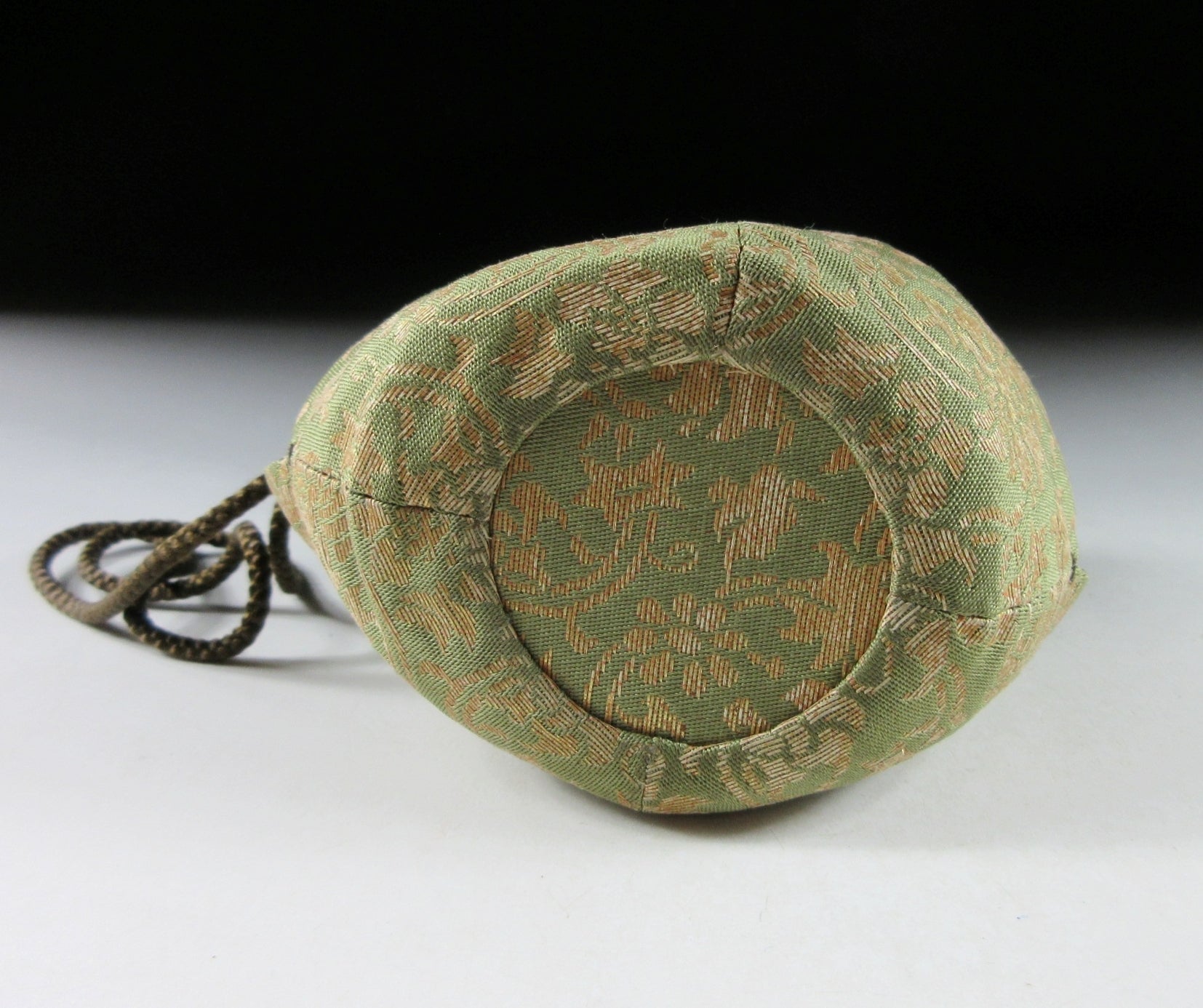Kominka Zakka
Late 1800s 'Yamaguchi Hozen' Natsume Inscribed by Ennosai Tetchu Soshitsu
Late 1800s 'Yamaguchi Hozen' Natsume Inscribed by Ennosai Tetchu Soshitsu
Couldn't load pickup availability
*FOR INSURANCE PURPOSES SHIPPING IS SET FOR EMS TO ALL AVAILABLE DESTINATIONS.
This listing is for an antique ‘Yamaguchi Hozen’ urushi lacquerware natsume dating back to the Meiji Period (1868-1912). It is made of wood and the lid is decorated with a makie ‘rangiku’ (spider chrysanthemum) motif over a black lacquer base. The inscription written under the lid is by Ennosai, the 13th head of the Urasenke school, and the box is stamped on the bottom with Hozen’s mark. This piece is in remarkable condition for its age, it has had little if any use.
Yamaguchi Hozen was a tea ceremony utensil dealer who had been visiting the school of Urasenke since the time of Ennosai in the latter part of the Meiji period. He had craftsmen make various tea ceremony utensils, including pottery and lacquerware in response to customer orders, and supplied them under his own brand name ‘Hozen’. Hozen’s stamp consists of a tsubo-tsubo mon (crest) and the characters for Hozen. Tsubo-tsubo is one of the traditional patterns used in the tea ceremony, and it is often used to decorate tea utensils. It was created by Sen no Sotan (1578-1658) and intended as mon crests for his family. The Hozen brand was mainly geared towards intermediate level items, or items for practice. It is said that shifuku were originally made from the same fabric as formal wear because Hozen made them for practice and delivered them to the Urasenke school. Since then, the use of the same cloth became widespread. These days Hozen pieces tend to be worn out and few remain, and they are rarely seen in places like the Kanto region. **Fellow sellers, this information was researched by Kominka Zakka and CANNOT be used in your own listings.
Ennosai Tetchu Soshitsu (1872-1924) was born as the eldest son of the 12th head of the Urasenke school, Yumyosai Jikiso Soshitsu (1852-1917). Ennosai succeeded him as the 13th head of the family when he was only 12 years old, so he relied on his mother for knowledge and training. His mother was a female tea master so she taught the tea ceremony to Ennosai after Yumyosai retired. After Ennosai’s marriage in 1889, he and his wife travelled to Tokyo to seek new opportunities. A few days after moving to Tokyo, he was approached by Ijūin Kanetsune, a well-known and powerful man in the financial world, who suggested he pursue academic studies rather than the tea ceremony. He was offered 3,000 yen as tuition fees (3,000 yen at the time would be worth over 50 million yen today), but Ennosai refused, indicating his intention to focus solely on tea ceremony. It is said that Ijūin was impressed with this spirit and became a strong patron of Urasenke. Later, with the support of many influential people, he paved the way for modern-day tea ceremony and built the foundation for the prosperity of Urasenke. After six years in Tokyo, where he worked to develop the style, Ennosai returned to Kyoto and hosted a tea ceremony to mark the 250th anniversary of Sen no Sotan's death, as well as publishing the Konnichian monthly newsletter. Through the publication of textbooks and other means, he worked to popularise the tea ceremony among the general public, he incorporated tea ceremony into women's school education, founded summer courses, and made them annual events in order to unify educational policies. Ennosai popularised the tea ceremony among the general public through publishing books, holding tea ceremonies, conducting summer seminars and other events, unfortunately he passed away in 1924 at the young age of 52. His wife passed away the following year in 1925. **Fellow sellers, this information was researched by Kominka Zakka and CANNOT be used in your own listings.
Urushi lacquerware refers to products that have been coated in natural lacquer collected from urushi trees. The process for lacquering items is long and very labour intensive, each item requiring multiple layers of lacquer that may take anywhere from six months to two years to complete. Heat and humidity are required to dry lacquer evenly and consistently, so Japan’s rainy season and summer months are ideal for this process. Urushi products are not only beautiful but also strong.
Makie refers to a crafting technique in Japan from presumably the Nara period. Craftsmen sprinkle gold or silver metal powder over successive layers of lacquer before it dries. Traditionally pure gold powder, pure gold flakes, and pure silver powder were used to complete motifs on lacquerware. The process of applying gold or silver powder requires both time and skill. At first the craftsman sketches out the design. He or she then adds charcoal powder to the base of the relief, and then a layer of urushi lacquer. Gold or silver powder is sprinkled over the wet lacquer, which acts as an adhesive. The surface is polished and then the process is repeated over and over until a beautiful raised pattern appears.
Sizes
Wooden Box: H.9.8cm (3.8”) x 9.7cm (3.8”) x 9.7cm (3.8”)
Natsume: H.4.5cm (1.7”) x Dia.8cm (3.1”)
Shifuku: 5.8cm (2.2”) from top to bottom x 9.5cm (3.7”) across
Condition
It’s in very good condition with no chips or cracks, the box however is a little spotty and darkened from age.
THESE ARE SHIPPING ESTIMATES BASED ON THE CURRENT GLOBAL SITUATION
**Germany, France, Greece, Spain, Poland, Austria, Slovakia, Lithuania, Slovenia: NO SHIPPING. Very strict and expensive packaging laws in place and we are not licensed to send products to these countries. We have no plan to register at this time because the process is in some cases very expensive and complicated, plus each country has its own set of regulations and application process.
**USA, UK, Canada, Australia, New Zealand, Switzerland, Norway: EMS Express 7-10 days.
**Asia: EMS Express 3-5 days.
**Central Asia, Middle East, South Africa, Brazil, Mexico: EMS Express 10-15 days.
**Russia: No shipping methods available.
Share


